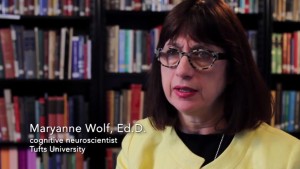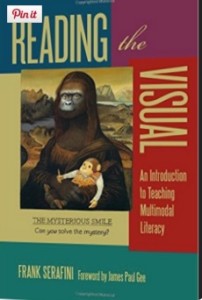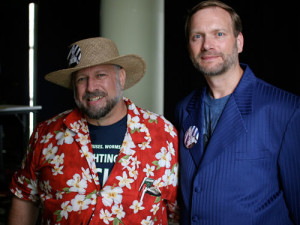Roughly twenty-five years ago, the internet became widely available to the general public. Originally created in the late-60s as a tool for government and academic computers to communicate, today the internet has grown to become a permanent fixture in the everyday lives of most people.
With internet’s rise has come a huge amount of online text. The roots of digital reading were humble and built on noble goals. In 1971, a researcher at the University of Illinois at Champaign-Urbana, Michael S. Hart, started Project Gutenberg. Hart dedicated years to digitizing classic works—everything from his very first entry, the Declaration of Independence, to children’s books to the complete collection of Shakespeare to great works like ‘Moby Dick,’ ‘The Importance of Being Earnest,’ and more.
Hart’s initial entries were text-only affairs: books painstakingly typed up (mostly by Hart alone, over ten years on free computers in the university lab) and saved on servers, available to anyone anywhere, anytime. His mission was to bring essential literature to the masses—a project close to his heart, as Hart called himself ‘a truck driver who got loose in academia.’ Hart’s vision was to, ‘to encourage the creation and distribution of e-books.’ For free, no less as he put it ‘to help break down the bars of ignorance and illiteracy.’
As it turns out, of course, Hart’s vision was well ahead of its time and anticipated the sort of open flow—some of it free, some of it now behind paywalls—of information we currently experience. Even beyond Hart’s death in 2011, Project Gutenberg has continued to be wildly popular and successful: in October 2015, it announced the addition of its 50,000th book.
To learn more about Michael Hart and his dedication to Project Gutenberg, check out: http://tinyurl.com/zzmtglh
Today, not only what we read, but how we read have been revolutionized by the web. As bandwidth has increased, photos, graphics, and now video are very much a part of any written work on the internet. Researchers refer to this type of writing as ‘multimodal’ as they include multiple modes of communication.
But in adding all these other elements to the written word, many researchers and educators fear that our ability to concentrate solely on text—deriving deeper meaning and drawing extra-textual conclusions—is being eroded.
Maryanne Wolf is the Director of the Center for Reading and Language Research at Tufts University and the author of the 2008 book, “Proust and the Squid: The Story and Science of the Reading Brain.”
 Wolf has spent more than two decades studying how the human brain reads and processes what is read. She explains that process as two steps: the first involves the brain recognizing the visual information that makes up a word, so for instance, take the word “toast.” In a flash of milliseconds, a reading brain ‘decodes’ or connects the shape of the letters to what is known about letter sounds, syntax and spelling.
Wolf has spent more than two decades studying how the human brain reads and processes what is read. She explains that process as two steps: the first involves the brain recognizing the visual information that makes up a word, so for instance, take the word “toast.” In a flash of milliseconds, a reading brain ‘decodes’ or connects the shape of the letters to what is known about letter sounds, syntax and spelling.
But it’s the next step of the process, though, that has Wolf and other researchers worried will be lost: the next milliseconds where we connect that decoded information to the rest of our knowledge, how we think and feel about the world around us. Wolf points to early twentieth century French novelist, Marcel Proust to explain that second step. Proust characterized reading’s core mission as a delivery system of information from author to reader and the point at which the reader develops new thoughts by using that information or, in his words, “…that which is the end of [the author’s] wisdom appears to us as but the beginning of ours.”
So, taking our “toast” example, you’d begin by decoding the /t/, navigating the /oa/ vowel team and the rest of the word. The second part of your reading process—much of which happens automatically, so adept are our brains at calling upon information—would involve thinking about which “toast” we’re talking about in this context. Is this the browned bread that just popped up from your toaster or is this the kind of “toast” that involves a few words from a party guest followed with the clinking of crystal flutes filled with champaign?
And if we’re talking about the latter “toast,” one could take a moment to ponder the evolution of cultural norms, for starters. Do all nationalities “propose a toast” to happy couples at weddings? When did the custom of clinking glasses and drinking to health and happiness begin?
Just by reading a simple word like “toast,” you can instantly be transported across history to learn about the ancient roots of this practice. (And if you really are interested in the history of toasts and toasting, check out Paul Dickson’s book, “Toasts: Over 1,500 of the Best Toasts, Sentiments, Blessings, and Graces, here: http://www.amazon.com/Toasts-Over-Sentiments-Blessings-Graces/dp/160819065X)
It’s that kind of deep, contemplative reading Maryanne Wolf fears might be lost in the advent of digital texts and the desire to quickly skim through what can feel like an unending onslaught of information rather than thoughtfully examine it.
As she writes in the Summer 2010 issue of Harvard University’s Neiman Reports, “My major worry is that, confronted with a digital glut of immediate information that requires and receives less and less intellectual effort, many new (and many older) readers will have neither the time nor the motivation to think through the possible layers of meaning in what they read.”
Wolf is quick to point out that more research needs to be done in this area. Reading scientists must, she says, examine whether an over-reliance on quick reading will undermine our ability to develop and maintain deep reading skills.
Given that the printed word has the dominant paradigm for around 560 years, there’s still much to be learned about the relatively new age of digital reading and how it will affect the brain and how we think about what we read.
In terms of using digital technology to our advantage in growing our depth of understanding and range of knowledge, there are tools available. Frank Sarafini, author of “Reading the Visual: An Introduction to Teaching Multimodal Literacy,” calls on teachers and students to work to develop deep reading skills when it comes to the multimedia (also known as ‘multimodal’) components of text.
 Part of that literacy for these multimedia elements of text, Sarafini says, involves examining the layout, font, color and other elements of the text itself. Font can say a lot about the tone of a piece—anything from a serious newspaper article to a more playful piece—by learning how to ‘read’ fonts, students can add another layer of literacy to their web surfing and reading.
Part of that literacy for these multimedia elements of text, Sarafini says, involves examining the layout, font, color and other elements of the text itself. Font can say a lot about the tone of a piece—anything from a serious newspaper article to a more playful piece—by learning how to ‘read’ fonts, students can add another layer of literacy to their web surfing and reading.
Sarafini also writes that guiding students through the structural features of a written work, how information is organized and laid out, as well as closely examining the author’s point of view—objective or subjective—and style, helps develop readers’ deeper understanding of what they read.
For more on Frank Sarafini’s book, check out: http://tinyurl.com/hcfnugs

